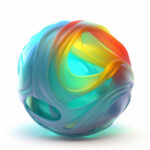
What are the current advancements in recycling technologies for plastics?

Can mold growth be prevented in areas prone to high humidity or moisture?

How does the shutter speed affect image sensor exposure?
In photography, the shutter speed is a crucial factor that affects image sensor exposure. Understanding how it impacts exposure is essential for capturing well-exposed images.
How does shutter speed impact image sensor exposure?
The shutter speed determines the duration for which the camera’s shutter remains open. A faster shutter speed means the shutter opens and closes quickly, resulting in less light reaching the image sensor. Conversely, a slower shutter speed allows more time for light to reach the sensor. Therefore, the longer the shutter stays open, the brighter the resulting image will be.
What is the correlation between shutter speed and image sensor exposure?
The correlation between shutter speed and image sensor exposure is direct. As the shutter speed increases, less light reaches the sensor, resulting in a darker image. On the other hand, a slower shutter speed allows more light to reach the sensor, resulting in a brighter image.
How does adjusting shutter speed affect the exposure of an image?
Adjusting the shutter speed directly affects the exposure of an image. By increasing the shutter speed, you can darken the image, while decreasing the shutter speed brightens it. This adjustment is particularly useful in situations where you want to freeze motion with a fast shutter speed or create motion blur with a slow shutter speed.
What role does shutter speed play in determining image sensor exposure?
Shutter speed plays a vital role in determining image sensor exposure. It allows you to control the amount of light that reaches the sensor, which directly affects the brightness and overall exposure of the image. By adjusting the shutter speed, you can achieve the desired exposure and capture the moment exactly as you envision it.
Conclusion
Understanding how shutter speed affects image sensor exposure is essential for photographers at all levels. By mastering the control of shutter speed, you can have full creative control over your images, achieving the desired exposure and capturing stunning photographs. So, next time you’re out shooting, don’t forget to experiment with different shutter speeds and embrace the power it holds over your images.
